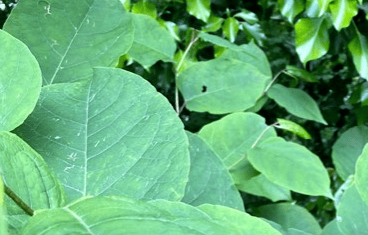Waistell and Williams v Network Rail.

Surveyor liabilities: implications of the Court of Appeal’s decision
Nik Carle FCIArb, Partner, Browne Jacobson
Although Network Rail’s appeal did technically fail, this was not an out-and-out victory for the two householders involved, by any means.
In the County Court, the men had been awarded:
• £4,320 each to reflect the cost of treating the knotweed; plus
• about £10,500 (for Mr Williams) and £10,000 (for Mr Waistell) to reflect the residual diminution suffered in the market value of their properties – even after the treatment programmes had been carried out.
The effect of the Court of Appeal’s judgment was to wipe out the claimants’ diminution awards. They were not left with very much to show for compensation after many years of fighting their cases. This will have been especially disappointing for the claimants and their lawyers because the diminution in value element was almost certainly the main prize that they were chasing from the outset.
When they take out actions against other landowners for private nuisance, claimants cannot recover damages linked to the fact that, let’s say, lenders might be cautious about lending in such situations. This is so, the Court ruled, because: “…the purpose of the tort of nuisance is not to protect the value of property as an investment or a financial asset …”
In nuisance actions, however, there may still be an entitlement to damages if claimants can prove that the knotweed has adversely affected their ability to enjoy the amenity and utility of their property.
By contrast, if proceedings are based on professional liability principles (i.e. in the tort of negligence rather than nuisance), an action of that sort will most likely put a claimant’s financial interests at the fore. In such a professional negligence setting, therefore – where (for example) a surveyor is sued for failing to spot the presence of knotweed during the course of a survey – conventional diminution in value awards should still be available – so property as a devalued asset or investment.
The Court of Appeal’s decision is not good news for property professionals or for surveyors particularly. Defendants to nuisance actions will often not be insured but surveyors facing professional liability allegations are almost always backed by PI cover.
It had been hoped that the Court of Appeal might (for policy reasons) ‘play down’ the seriousness of knotweed but no – it went the opposite way. It is easy to see how diminution in value assessments might now be enlarged because of the Court of Appeal’s alarming pronouncements about knotweed:
This “pernicious” weed doesn’t merely carry the risk of future physical damage to buildings on the land but more than that: “… its presence imposes an immediate burden on landowners who face an increased difficulty in their ability to develop, and in the cost of developing, their land, should they wish to do so, because of the difficulties and expense of eradicating [it] …”
The Court of Appeal rather side-stepped the question of the stigma around Japanese knotweed (and how this might play into damages awards in other cases e.g. in the professional negligence category). It will be interesting to see how valuation expert evidence develops in the light of the Waistell and Williams decision. Generally, however, the message is that surveyors need to be on their guard more than ever before.
[Note:- Network Rail was refused leave to appeal to the Supreme Court]